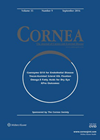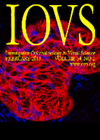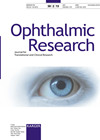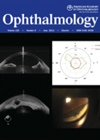
Journal Reviews
Ocular lubrication versus bandage contact lens in recurrent erosion syndrome (RES)
Twenty-nine patients (eight traumatic, five epithelial basement membrane dystrophy, two idiopathic) were randomised using SPSS to either ocular lubricants or bandage contact lenses (BCLs). Only patients previously treated with ocular lubricants were included. Patients with previous surgery, laser treatment, dry...
Oral proton pump inhibitors in macular degeneration patients
The authors report five patients with advanced wet macular degeneration and poor vision with onset or enhancement of visual hallucinations with the use of proton pump inhibitors for heartburn management. The hallucinations were reversible with discontinuation of medication. The authors...
The decline in attentional visual fields in the Salisbury Eye Evaluation Driving Study
The purpose was to document changes in attentional visual field (AVF) over time and analyse the possible baseline characteristics predicting a decline in AVF size over time. Data was taken from a sample of 968 individuals. The authors found a...
Erythropoietin in healing corneal epithelial defects in rabbits
Corneal epithelial defects heal slowly in patients with diabetes, limbal stem cell deficiency and severe chemical burns. Erythropoietin is a glycoprotein hormone that promotes red blood cell proliferation and inhibits apoptosis of erythroid progenitors as well as nonhematopoietic cells. In...
Rebamipide 2% for dry eye
Rebamipide is a quinolinone derivative that has been found to increase mucin production and the number of conjunctival goblet cells. A previous phase two study has shown rebamipide 2% to be better than placebo in improving the ocular surface and...
Moxifloxacin 0.5% for bacterial keratitis
The authors report on the results of a randomised controlled trial comparing commercially available non-preserved moxifloxacin 0.5% vs. a combination of fortified cefazolin 5% and tobramycin 1.3% in the treatment of moderate bacterial keratitis without perforation. Corneal scrapings were collected...
Long-term results of cross-linking treatment for keratoconus
The authors report on the long-term outcomes in a prospective case series of patients with keratoconus undergoing corneal collagen cross-linking (CXL) treatment. Thirty-two patients (40 eyes; mean age 22.5+/-5.5 years) with Grade I, II and III progressive keratoconus were recruited...









